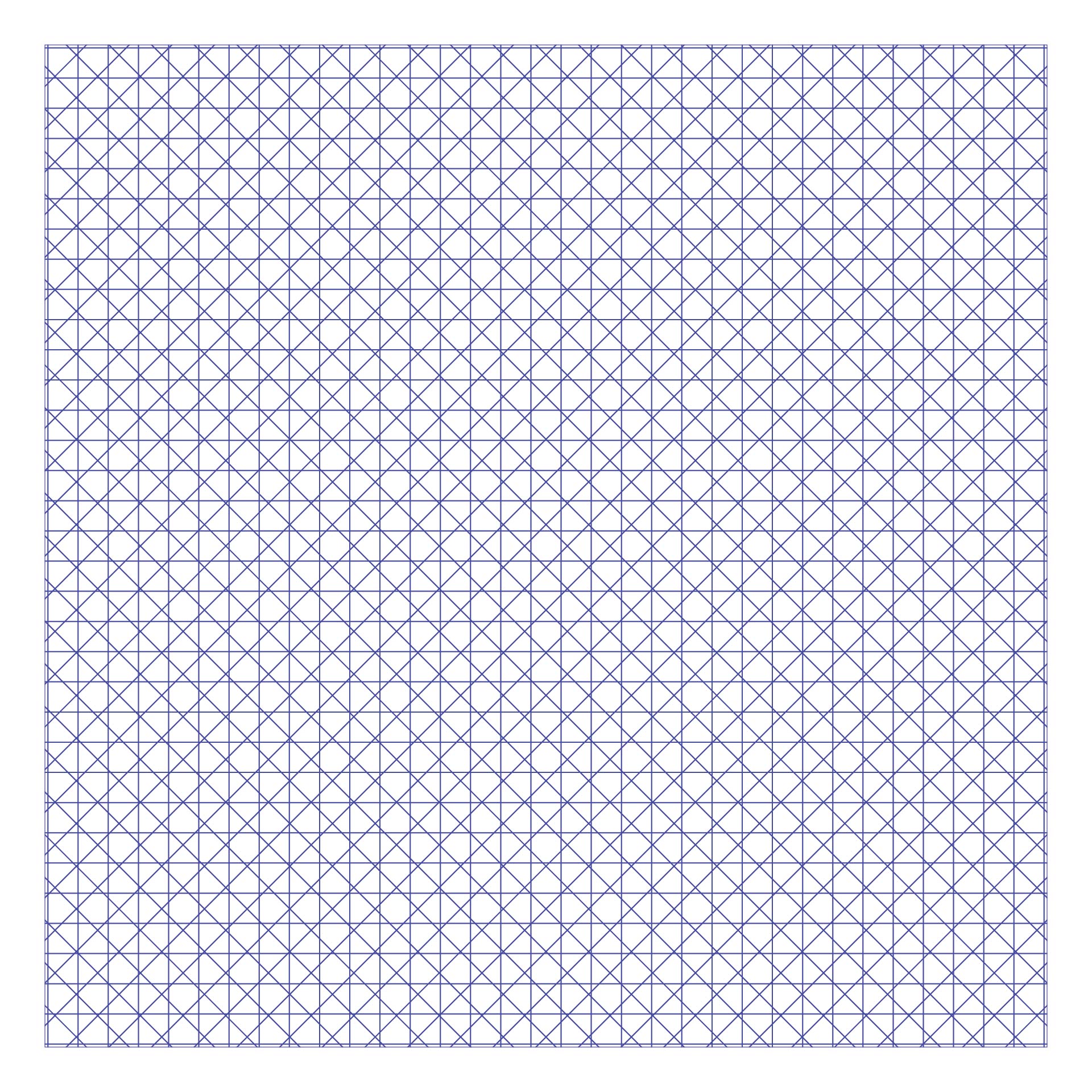

Draw these in a sketchbook (divide your page into a grid for this!) or use a camera to record the grids you discover - from wire fencing, to patterns on clothes from the potato waffle on your plate to the patio slabs in your garden. Record grids that you encounter in the everyday.How accurate a grid can you create without measuring or using a straight-edge? How might you collage, print or construct a grid? Does a grid have to be made from lines? What other possibilities are there? Does a grid have to contain something - is it possible to appreciate it as a network of lines? What is the largest or smallest grid you can make, be it drawing in sand or on sand(!)? How might you make an ephemeral grid, one destined to disappear? How might you document it failing, falling, floating away, distorting as it fades. This might include: free-hand grid drawing, drawing a grid with a continuous line (or attempting to), blind grid drawing, using your mouth, foot or cubital fossa to draw a grid. Experiment with imaginative and playful ways of grid creation.When/where within a typical day might you encounter various reoccurring patterns? What might be the origins of these, and to what to purposes did/can they serve? What makes a pattern impressive, awe-inspiring or profound rather than simply decorative? a single element of the pattern implies the infinite total. Repeating patterns also demonstrate that in the small you can find the infinite. A common feature of Islamic art is geometric patterns. This use of geometry is thought to reflect the language of the universe and help believers reflect on the greatness of creation - complex geometric designs create the impression of unending repetition, and this also helps to get an idea of the infinite nature of Allah.How might this 'pixelated' way of working be comparable to digital technologies and printing processes? What were the advantages or disadvantages of this technique? What skills would a Roman craftsperson require to produce this work? Ancient Romans and Greeks created large mosaics from small pre-cut pieces of glass, ceramic and stone.Why did Egyptians want to draw figures so strictly within fixed proportions? What might be the benefits or problems with this? These were a set of ideal, mathematical ratios applied by the Egyptians to measure the various parts of the human body in relation to each other.

Grid lines were used to ensure that proportions were in line with ' Canonical Proportions'.



 0 kommentar(er)
0 kommentar(er)
